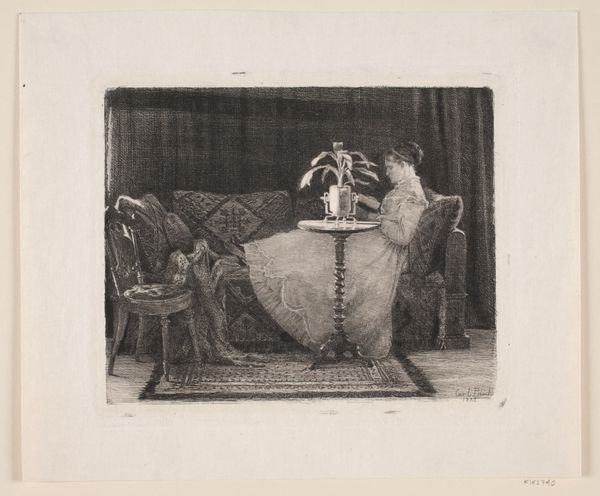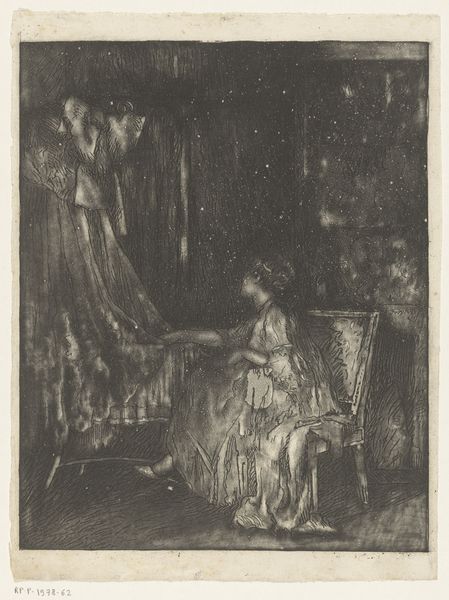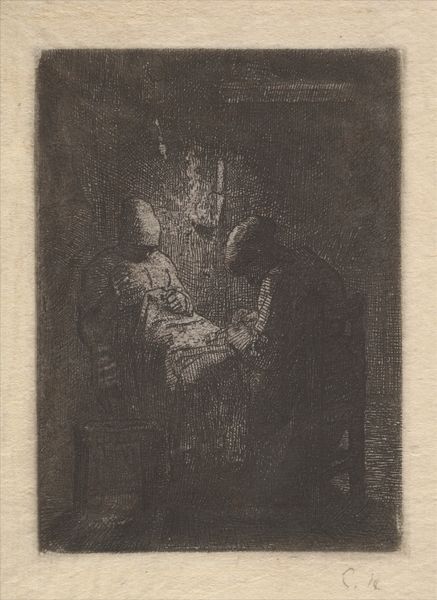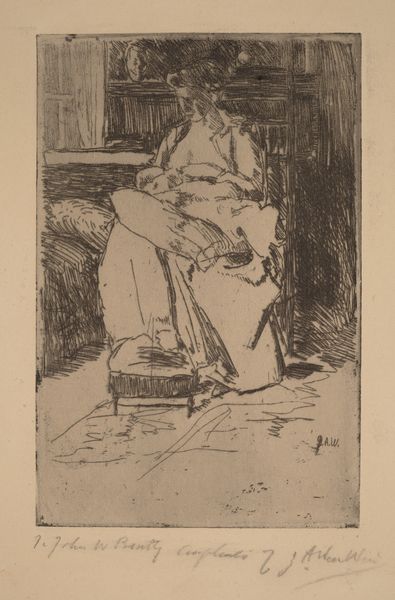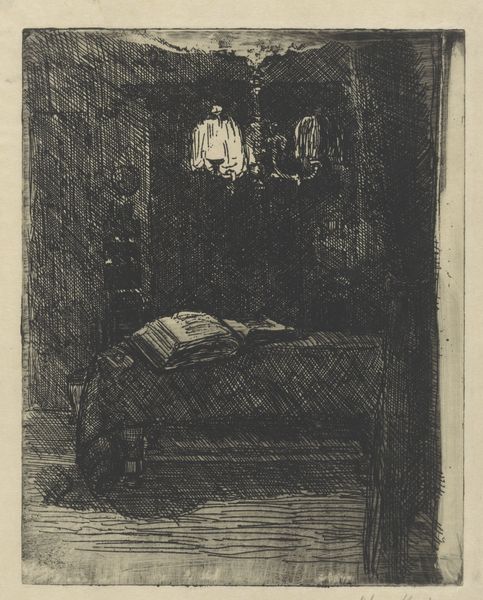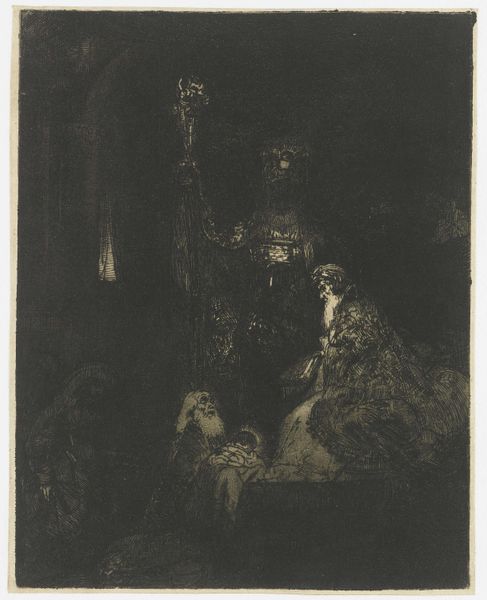
print, etching
# print
#
etching
#
line
#
genre-painting
#
realism
Dimensions: height 340 mm, width 248 mm
Copyright: Rijks Museum: Open Domain
Curator: This is Barbara Elisabeth van Houten's etching, "Stoel met kussen en stoof," likely created between 1877 and 1950. Editor: My immediate impression is the overwhelming sense of texture; you can almost feel the plush cushion and the chill in the air, despite it being just an etching. It feels cold. Curator: Absolutely. The image presents a detailed depiction of domestic interior; what seems like an empty room dominated by an ornately carved chair. Its realistic rendering places it within a broader genre tradition of highlighting scenes of everyday life but with a distinct attention to class and comfort. Editor: The chair, the foot warmer…the artist is showing the layers, both physical and perhaps social. You can almost see the labor that went into crafting each element, from the carved wood of the chair to the textile patterns of the cushion. Do you think van Houten's process mirrored those depicted? Curator: It is highly probable, though we must recognize that such an image gains currency and relevance within a broader public context as well. The genre emerged during a period of increasing urbanization and industrialization, thus catering to specific societal interests in these "authentic" and cozy images from a domestic setting, which in fact carry multiple layers of visual meaning, cultural values and symbolism. Editor: I find myself drawn to that small footstool, the ‘stoof’ of the title. It is quite clearly constructed, rather than grown: what a contrast from its solid materiality and our human vulnerability to cold. There are patterns that look like painted miniatures… such elaborate craft. Curator: Indeed, it is difficult to escape such social considerations. Images such as these were particularly favored among the rising middle classes and suggest themes of comfort, privacy and domesticity to that consumer group. Editor: Thinking about it now, all the furniture is the subject of labor: even what isn't made of fabric has clearly taken time to produce and bring to its completed, pristine form. What would otherwise look comfortable begins to feel heavy with social relations, with labor and production. Curator: A striking point, reflecting on how artwork like this really shows domestic space in a very precise cultural, and ultimately, political way. Editor: Yes. A look beyond what's presented on the surface always shows the underlying stories waiting to be discovered in processes and material choices.
Comments
No comments
Be the first to comment and join the conversation on the ultimate creative platform.

